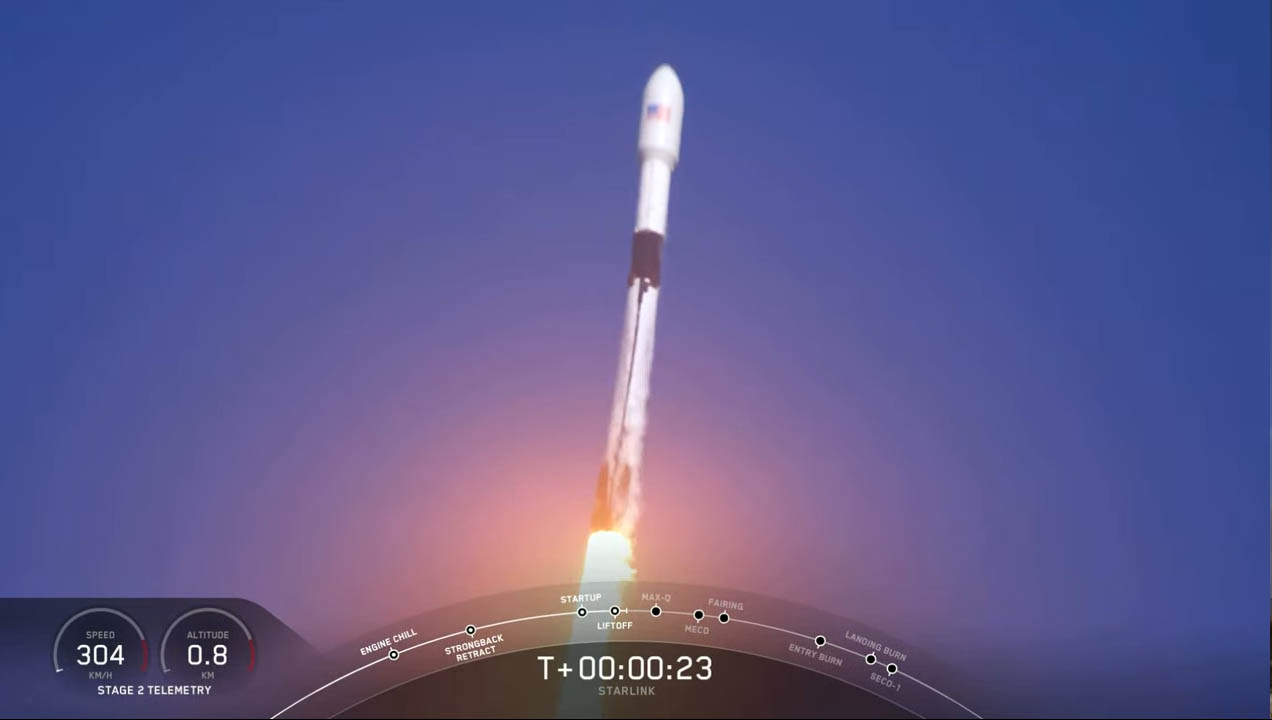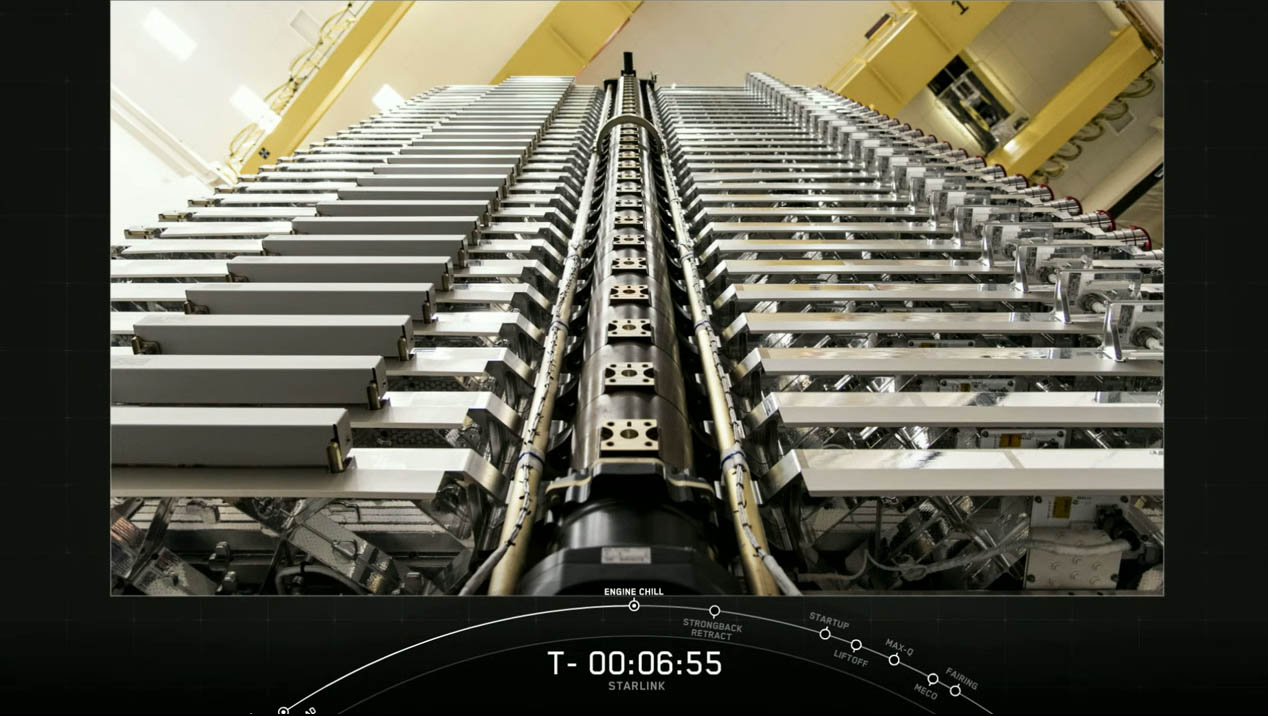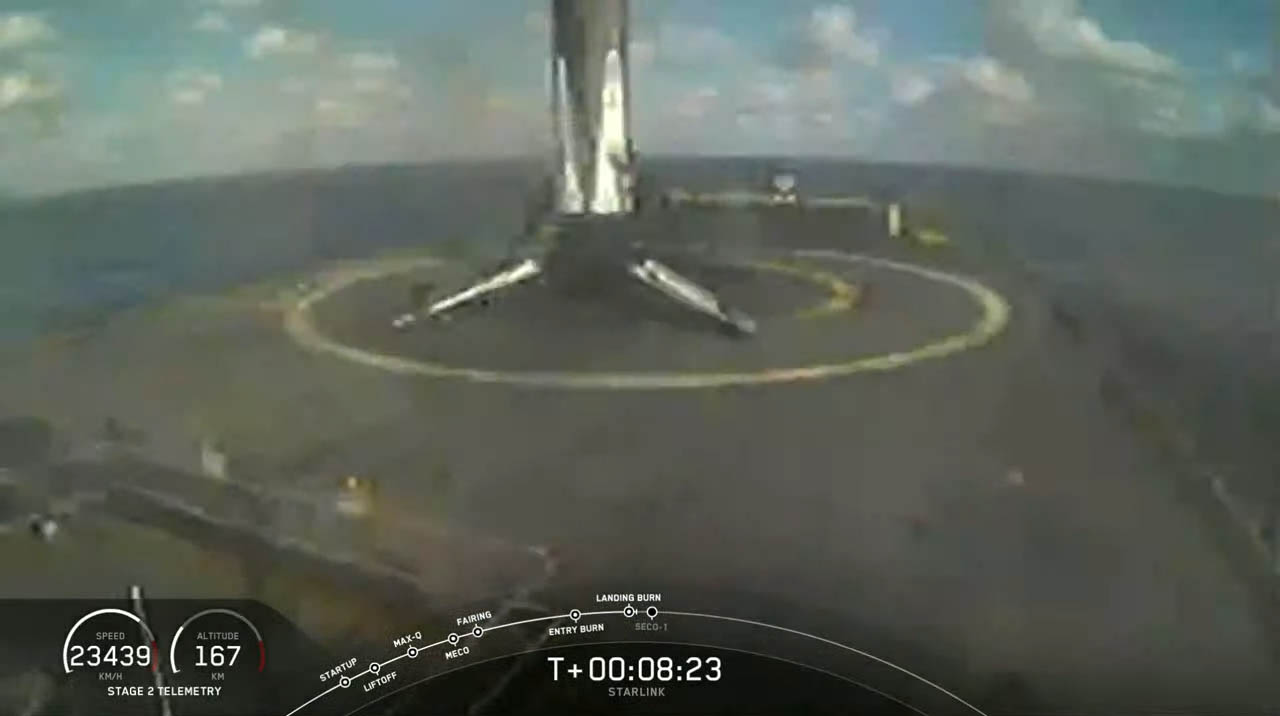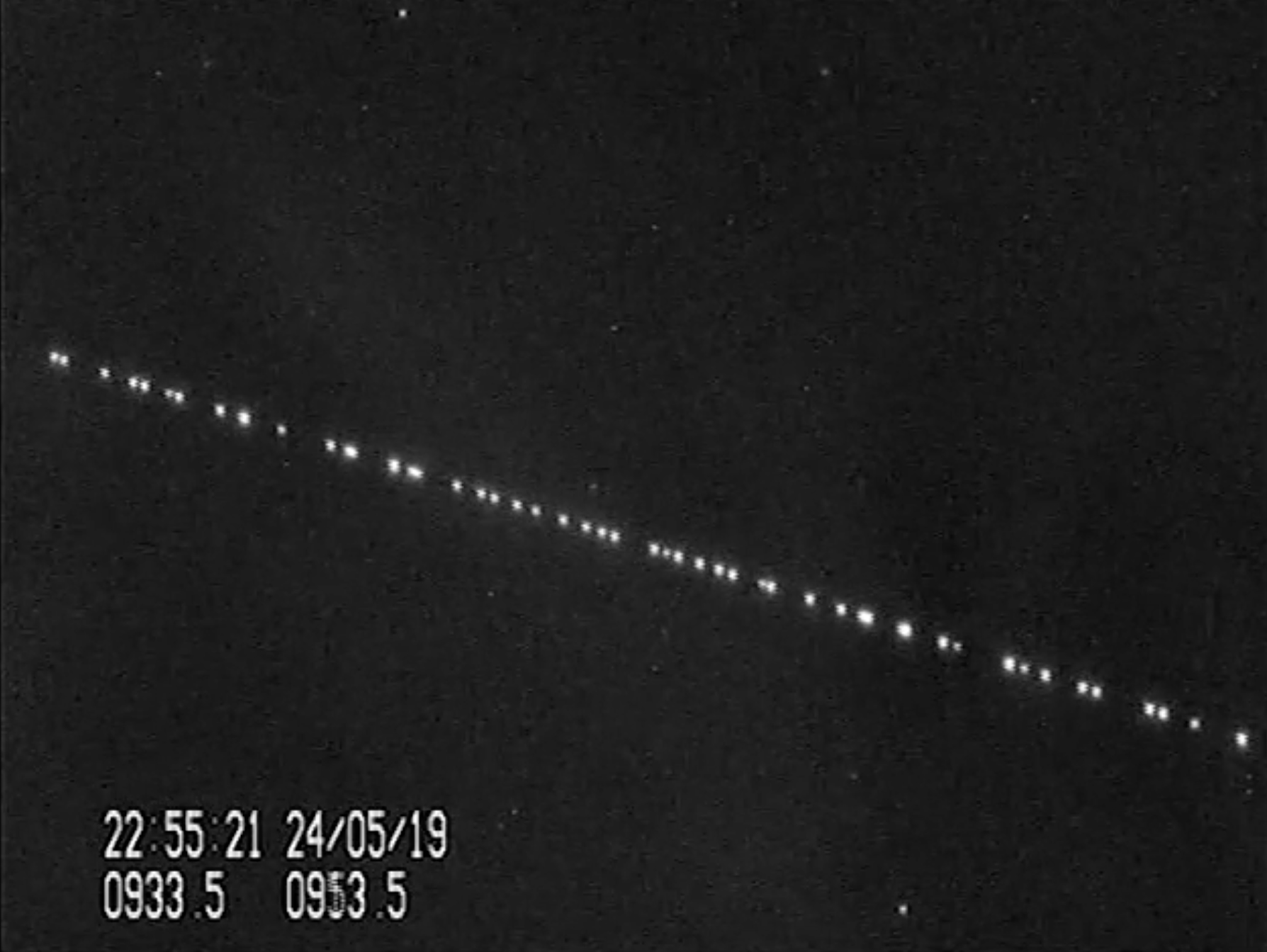SpaceX launches 60 new Starlink satellites, sticks rocket landing at sea
CAPE CANAVERAL, Fla. — SpaceX successfully launched its fourth batch of Starlink satellites into orbit and nailed a rocket landing today (Jan. 29) following days of weather delays for the mission.
A sooty Falcon 9 rocket — which made its third flight with this launch — roared to life at 9:06 a.m. EST (1406 GMT), lifting off from Space Launch Complex 40 at Cape Canaveral Air Force Station here in Florida. The rocket carried 60 more Starlink satellites for SpaceX's growing constellation, the second such launch by the company this month. The satellites all successfully deployed about an hour after liftoff.
Last week, strong upper level winds forced the private spaceflight company to postpone the Starlink-3 mission's launch. SpaceX then aimed for the backup launch date of Jan. 28; however, rough seas where the drone ship was waiting may have thwarted any attempt at a landing.
Video: See SpaceX's 1st Starlink satellites in the night sky
In Photos: SpaceX launches third batch of 60 Starlink satellites to orbit

A SpaceX Falcon 9 rocket launches 60 new Starlink satellites on the Starlink-3 mission from Cape Canaveral Air Force Station in Florida on Jan. 29, 2020.

A SpaceX Falcon 9 rocket launches 60 new Starlink satellites on the Starlink-3 mission from Cape Canaveral Air Force Station in Florida on Jan. 29, 2020.

A SpaceX Falcon 9 rocket launches 60 new Starlink satellites on the Starlink-3 mission from Cape Canaveral Air Force Station in Florida on Jan. 29, 2020.

A stunning view of Earth captured by a camera on SpaceX's Falcon 9 rocket as it launches the Starlink-3 mission on Jan. 29, 2020.

A view of the 60 Starlink satellites stacked for launch on the Starlink-3 mission.

The view of Earth from the Falcon 9 upper stage during SpaceX's Starlink-3 mission.

The Falcon 9 rocket that launched SpaceX's Starlink-3 mission landed safely on the company's drone ship Of Course I Still Love You after launching the Starlink-3 satellites into orbit on Jan. 29, 2020. It was the third launch for this rocket.
The star of this mission, the Falcon 9 first stage dubbed B1051.3 by SpaceX, previously lofted a Crew Dragon capsule as part of the company’s uncrewed mission to the space station (Demo-1) as well as a trio of Earth-observing satellites for Canada.
Following the successful launch, the rocket's first stage gently touched down on a SpaceX's drone ship landing platform "Of Course I Still Love You" in the Atlantic Ocean, marking the company's 49th booster recovery.
SpaceX designed its souped up Falcon 9 rocket to fly as many as many as 10 times with only light refurbishments in between. The company has yet to fly a booster five times, but continues to rack up veterans with three or four flights, proving their capability.
Breaking space news, the latest updates on rocket launches, skywatching events and more!
A Growing Constellation
Today's launch is part of SpaceX's goal of connecting the globe with its Starlink network. Each satellite is identical, weighing in at roughly 485 lbs. (220 kg), and is part of a larger network that aims to provide internet coverage to the world below. With this launch, it brings SpaceX's burgeoning constellation up to 240, making it the largest in orbit to date.
But SpaceX is not the only aerospace company with dreams of global connectivity. OneWeb launched its first set of six satellites in 2019, and Amazon hopes to launch its own constellation soon. However, SpaceX (with its own rockets) is the first to amass a sizable constellation.
Elon Musk, SpaceX CEO and founder, has said the company will need at least 400 satellites in orbit to provide minimal coverage, and at least 800 to provide moderate coverage. With this launch, the private spaceflight company is over halfway to the minimal coverage mark and says service could begin sometime this year. When that happens, the first places to receive coverage would be portions of the U.S. and Canada.
In photos: SpaceX launches third batch of 60 Starlink satellites to orbit
How Starlink works
SpaceX's Starlink project has one simple goal: to provide constant high-speed internet access to users around the world. Currently technology limitations often leave remote and rural areas without access; SpaceX wants to change that.
To access the internet, we rely on wireless cell towers or cables routed into our homes and offices. To that end, massive communications satellites will beam down internet coverage down from their orbital perched high above the Earth, in what's known as geostationary orbit (typically 22,000 miles up). The signal has to travel such a long distance, which translates to slower connections speeds.
By operating at a lower altitude (and with more satellites), SpaceX says it can mitigate this issue and provide reliable coverage at an affordable price.
But at what cost?
Astronomical nuisance?
Not everyone is thrilled about the idea of SpaceX's new mega-constellation. Astronomers have voiced concerns that the satellites could interfere with crucial scientific observations.
SpaceX's Starlink satellites stand out as they march across the night sky. That's because they’re incredibly bright, appearing as a train of bright dots as they orbit. Just how bright they were shocked and concerned scientists. Many were nervous that the Starlink constellation (and the others that will follow it) could interfere with their work.
Astronomers rely on ground-based telescopes to take long-exposure images of astronomical objects they want to study. When something bright passes in front of the telescope's field of view, it can obscure the image, and the observer has to figure out what caused it.
Related: Why SpaceX's Starlink satellites caught astronomers off guard
Musk and SpaceX listened to the concerns of astronomers and have experimented with ways of reducing the satellite’s brightness. One satellite in the previous batch was coated in a special material to make it appear darker in orbit.
Once the dark coating has been tested, SpaceX will decide how effective it is and whether or not the whole fleet will receive the same treatment.
During live launch commentary today, Starlink engineer Lauren Lyons said the satellite with that dark coating is still making its way to its final orbit, so more time will be needed for SpaceX to complete its tests.
Falling fairings
SpaceX has proven that it can successfully reuse its rocket boosters, but the company wants to take the notion of reusability one step further by recovering and refurbishing payload fairings. After today's launch, SpaceX successfully "caught" one half of the payload fairing with one of its net-wielding boats, known as "Ms. Tree."
The rocket’s nose cane is comprised of two halves (also known as payload fairings), which are designed to protect the payload during launch. SpaceX has equipped each fairing with its own navigation system that allows it to glide gently back to Earth. The company hopes this will facilitate the recovery and reuse of the fairing.
With each piece fetching roughly $3 million, SpaceX hopes to save some money by reusing them on future flights. To that end, the company has outfitted two of its recovery vessels with giant nets. Acting as mobile catcher's mitts, SpaceX hopes that it will be able to snag a fairing in each net.
To date, GO Ms. Tree (the vessel formerly known as Mr. Steven) has now made three successful catches. The second boat, GO Ms. Chief has yet to snag a falling fairing.
- SpaceX's Starlink Constellation Could Swell by 30,000 More Satellites
- SpaceX's Starlink Broadband Service Will Begin in 2020: Report
- 'Whoa, It Worked': Elon Musk Tweets Via SpaceX's Starlink Satellites
Follow Amy Thompson on Twitter @astrogingersnap. Follow us on Twitter @Spacedotcom or Facebook.


Amy Thompson is a Florida-based space and science journalist, who joined Space.com as a contributing writer in 2015. She's passionate about all things space and is a huge science and science-fiction geek. Star Wars is her favorite fandom, with that sassy little droid, R2D2 being her favorite. She studied science at the University of Florida, earning a degree in microbiology. Her work has also been published in Newsweek, VICE, Smithsonian, and many more. Now she chases rockets, writing about launches, commercial space, space station science, and everything in between.

